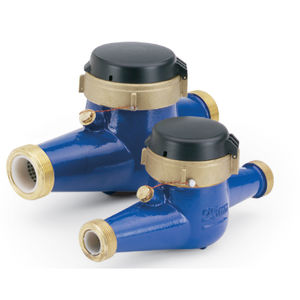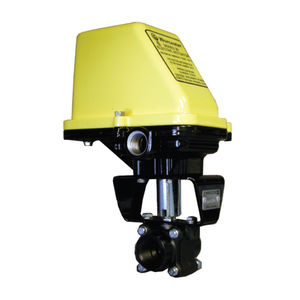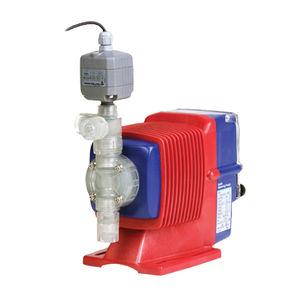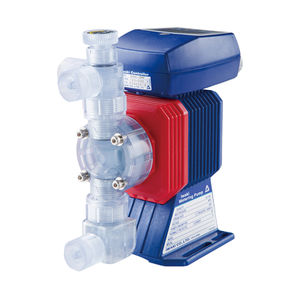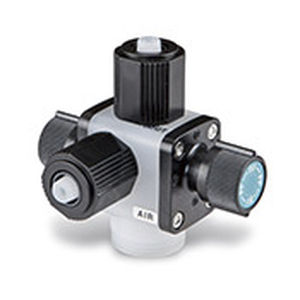
PVC pressure relief valve BPR seriesPTFEdiaphragmstandard

Add to favorites
Compare this product
Characteristics
- Body material
- PVC
- Valve plug seal material
- PTFE
- Other characteristics
- diaphragm, standard, back pressure
- Controlled pressure
Max.: 150 psi
Min.: 0 psi
- DN
0.25 in, 0.5 in, 0.75 in, 1 in
Description
Walchem Back Pressure / Anti-Siphon valves provide stability and safety to your metering pump installations. All metering pump require back pressure to operate correctly and often installations do not provide enough back pressure to stabilize the pump flow – and some have even pressures lower than atmospheric, creating a siphoning situation. Back pressure / anti-siphon valves can provide the required back pressure to the pumps when it is not created by the application. They also will assist in stopping a siphon condition. Additionally, when they are used in a bypass, they act as a pressure relief valve, providing for over-pressurization protection to the pump and discharge piping assembly, critical for mechanically actuated metering pumps.
Key Benefits:
• Rugged valves are constructed from PVC, PP, PVDF, or Stainless Steel components to ensure long life and reliability.
• Spring-loaded PTFE faced diaphragms provide positive discharge pressure to stabilize pump output and prevent syphoning.
• All valves are screw adjustable from 0 to 150 psi standard.
• Ideal for LK and EHE metering pumps, but can be used with any metering pump requiring back pressure adjustment or anti-syphon protection.
Catalogs
No catalogs are available for this product.
See all of Walchem‘s catalogsExhibitions
Meet this supplier at the following exhibition(s):

Related Searches
- Valve
- Hand valve
- Control valve
- Ball valve
- Stainless steel valve
- Electrically operated valve
- Regulating valve
- Lever control valve
- Electric valve
- Normally closed solenoid valve
- Direct-operated solenoid valve
- Piston actuator valve
- Radial diaphragm valve
- Water solenoid valve
- Flow control valve
- Teflon® valve
- Liquid valve
- PVC-U valve
- Pressure-limiting valve
- Automatic valve
*Prices are pre-tax. They exclude delivery charges and customs duties and do not include additional charges for installation or activation options. Prices are indicative only and may vary by country, with changes to the cost of raw materials and exchange rates.


